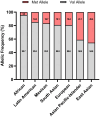BDNF: New Views of an Old Player in Traumatic Brain Injury
- PMID: 37067029
- PMCID: PMC11423547
- DOI: 10.1177/10738584231164918
BDNF: New Views of an Old Player in Traumatic Brain Injury
Abstract
Traumatic brain injury is a common health problem affecting millions of people each year. BDNF has been investigated in the context of traumatic brain injury due to its crucial role in maintaining brain homeostasis. Val66Met is a functional single-nucleotide polymorphism that results in a valine-to-methionine amino acid substitution at codon 66 in the BDNF prodomain, which ultimately reduces secretion of BDNF. Here, we review experimental animal models as well as clinical studies investigating the role of the Val66Met single-nucleotide polymorphism in traumatic brain injury outcomes, including cognitive function, motor function, neuropsychiatric symptoms, and nociception. We also review studies investigating the role of BDNF on traumatic brain injury pathophysiology as well as circulating BDNF as a biomarker of traumatic brain injury.
Keywords: BDNF; genetics; neurotrophin; traumatic brain injury.
Conflict of interest statement
Declaration of Conflicting InterestsThe authors declared no potential conflicts of interest with respect to the research, authorship, and/or publication of this article.
Figures



Similar articles
-
A role for the BDNF gene Val66Met polymorphism in schizophrenia? A comprehensive review.Neurosci Biobehav Rev. 2015 Apr;51:15-30. doi: 10.1016/j.neubiorev.2014.12.016. Epub 2015 Jan 3. Neurosci Biobehav Rev. 2015. PMID: 25562189 Review.
-
Variant BDNF (Val66Met) impact on brain structure and function.Cogn Affect Behav Neurosci. 2006 Mar;6(1):79-85. doi: 10.3758/cabn.6.1.79. Cogn Affect Behav Neurosci. 2006. PMID: 16869232 Review.
-
The Role of BDNF in Experimental and Clinical Traumatic Brain Injury.Int J Mol Sci. 2021 Mar 30;22(7):3582. doi: 10.3390/ijms22073582. Int J Mol Sci. 2021. PMID: 33808272 Free PMC article. Review.
-
Effects of the BDNF Val66Met Polymorphism on Anxiety-Like Behavior Following Nicotine Withdrawal in Mice.Nicotine Tob Res. 2015 Dec;17(12):1428-35. doi: 10.1093/ntr/ntv047. Epub 2015 Mar 5. Nicotine Tob Res. 2015. PMID: 25744957 Free PMC article.
-
The brain-derived neurotrophic factor Val66Met polymorphism and rate of decline in Alzheimer's disease.J Alzheimers Dis. 2006 Mar;9(1):43-9. doi: 10.3233/jad-2006-9104. J Alzheimers Dis. 2006. PMID: 16627933
Cited by
-
Mollugin attenuates oxygen-glucose deprivation/reperfusion-induced brain microvascular endothelial cell death and permeability through activation of BDNF/TrkB-modulated Akt pathway.J Bioenerg Biomembr. 2025 May 30. doi: 10.1007/s10863-025-10063-0. Online ahead of print. J Bioenerg Biomembr. 2025. PMID: 40445497
-
Investigating the role of the brain-derived neurotrophic factor Val66Met polymorphism in repetitive mild traumatic brain injury outcomes in rats.Behav Brain Funct. 2025 Mar 5;21(1):5. doi: 10.1186/s12993-025-00270-5. Behav Brain Funct. 2025. PMID: 40045366 Free PMC article.
-
The Levels of Biomarkers Interleukin 1 (IL-1) and Brain-Derived Neurotrophic Factor (BDNF) in Non-Invasive Conventional Rehabilitation and Robotic Rehabilitation Among Brain Injury Patients: A Narrative Review.Cureus. 2024 Aug 31;16(8):e68332. doi: 10.7759/cureus.68332. eCollection 2024 Aug. Cureus. 2024. PMID: 39355076 Free PMC article. Review.
References
-
- Al-Shawi R, Hafner A, Olson J, Chun S, Raza S, Thrasivoulou C, and others. 2008. Neurotoxic and neurotrophic roles of proNGF and the receptor sortilin in the adult and ageing nervous system. Eur J Neurosci 27(8):2103–14. - PubMed
-
- Altmann V, Schumacher-Schuh A, Rieck M, Callegari-Jacques S, Rieder C, Hutz M. 2016. Val66Met BDNF polymorphism is associated with Parkinson’s disease cognitive impairment. Neurosci Lett 615:88–91. - PubMed
-
- Arango-Lasprilla J, Kreutzer J. 2010. Racial and ethnic disparities in functional, psychosocial, and neurobehavioral outcomes after brain injury. J Head Trauma Rehabil 25(2):128–36. - PubMed
-
- Ashina H, Porreca F, Anderson T, Amin F, Ashina M, Schytz H, and others. 2019. Post-traumatic headache: epidemiology and pathophysiological insights. Nat Rev Neurol 15(10):607–17. - PubMed
Publication types
MeSH terms
Substances
LinkOut - more resources
Full Text Sources
Medical

